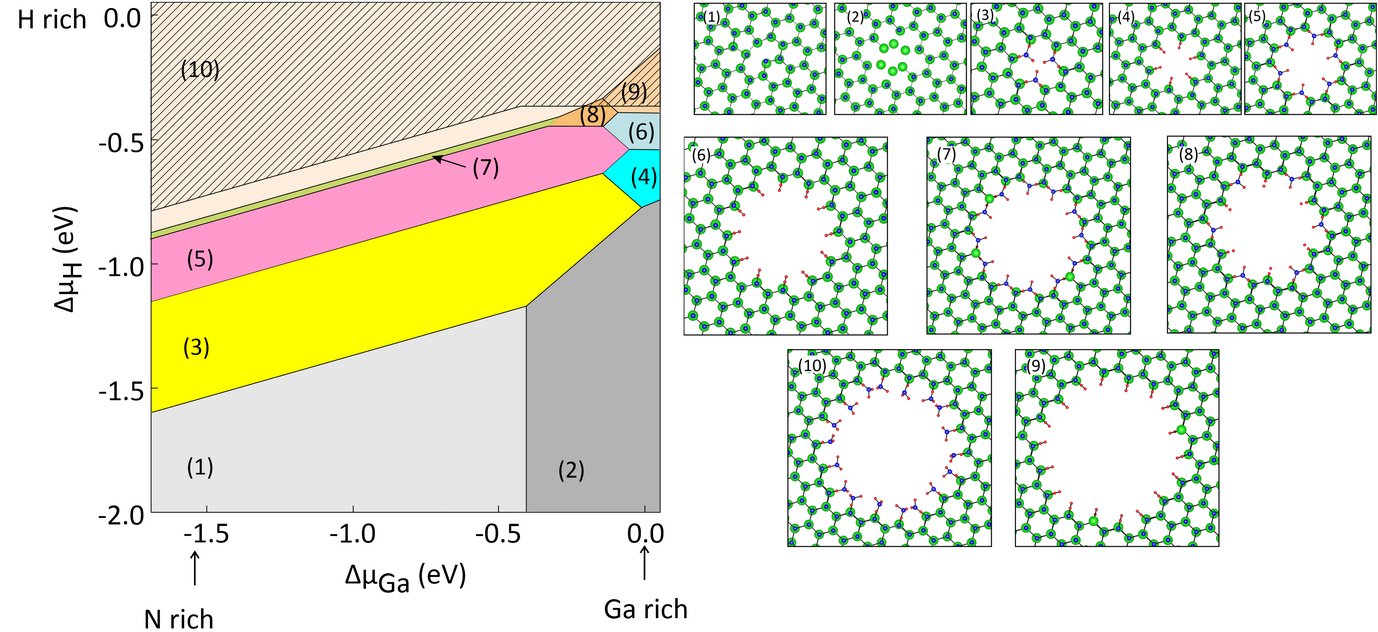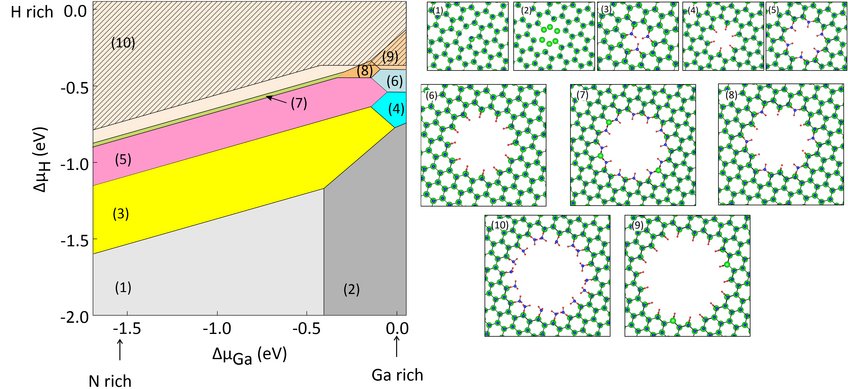Dislocation Induced Nanopipe Formation in GaN
Screw dislocation induced nanopipes are investigated by combining elasticity theory with density functional theory calculations. Based on these calculations a c-type screw dislocation phase diagram is constructed which describes the energetically most favorable core structures as function of the Ga, N and H chemical potentials. We find that nanopipes with diameters ranging from ≈1 to ≈2 nm are energetically favorable for high values of the H chemical potential and conditions that correspond to MOCVD and MOVPE growth.
Dislocations in III-Nitrides constitute a long-standing controversial topic. Due to the lattice and thermal mismatch, dislocations with densities as high as 108 to 1010 cm-2 are present in heteroepitaxially grown GaN. Although c-type screw dislocations correspond to only 10% of all dislocations in GaN, there are strong indications that they have a detrimental effect on the properties and reliability of high-power electronic devices [see e.g., K. Nomoto et al., IEEE Electron Device Lett. 37, 161 (2016)]. An intriguing feature of these defects is that experimental evidences suggest that they are associated with open core structures, thus forming nanopipes.

Nanopipes exhibit large free surface areas which increase the energy. However, they can be energetically favorable if the surface energy is compensated by the core and strain energy of the material removed to create the NP. In the present project we investigate the intricate interplay between surface energies and core and strain energies by combining DFT with large scale empirical potential calculations and elasticity theory. Based on these calculations we constructed a screw dislocations’ phase diagram which describes the energetically most favorable core structures as function of the species’ chemical potentials.
The aforementioned phase diagram reveales that under typical MOCVD or MOVPE growth conditions the Ga and N dangling bonds at the open core inner surfaces are passivated by NHx molecules and H atoms, respectively. This reduces considerably the surface energy under these conditions enabling the formation of nanopipes with hexagonal cross section and diameters ranging for ≈1 to ≈2 nm.
Although these nanopipes obey electron counting rule, they offer routes for efficient diffusion impurities. Moreover, their inner free surface offers sites for preferential incorporation of impurities. In order to address this, we have extended our calculations and study the incorporation of Mg and C impurities at the inner surfaces. Our calculations indicate that both C and Mg dopands decorate the inner surface at concentrations (in at. %) at least one order of magnitude higher than in highly doped bulk semi-insulating layers.

This project has received funding from the ECSEL Joint Undertaking (JU) project UltimateGaN under grant agreement No 826392. The JU receives support from the European Union’s Horizon 2020 research and innovation program and Austria, Belgium, Germany, Italy, Slovakia, Spain, Sweden, Norway, Switzerland.

